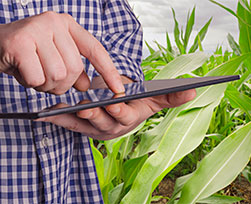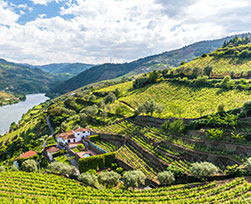

What is an Agricultural Census?

According to the Food and Agriculture Organization (FAO), the Agricultural Census (RA) is one of the main pillars of a national statistical system and, in many countries, is often the only means of producing statistical information on the structure and other dimensions of the agricultural sector. Furthermore, it is the only data collection tool that produces statistical information on farms at the most detailed geographical level standing as an essential source of information for governments and decision-makers.
The RA provides a snapshot of the structure of a country's agricultural sector and, when compared with previous censuses, identifies trends and structural changes in the sector leading to a better future policy intervention regarding this sector.
Why is it important?
The Agricultural Censuses make possible the characterization of the agricultural population and agricultural holdings and provide a complete information framework on agricultural activity, analyzing the evolution of agricultural production systems, providing information on the main agricultural production methods, describing the family farming population and the agricultural labour force, providing information on the origin of the income of the holder, presenting a set of information related to rural development and other other gainful activities not directly related to the agricultural holding and informing on the evolution of the succession of the agricultural holding.

The Agricultural Censuses are an exhaustive survey, collecting data on all national farms and generating results at very detailed geographical levels. This type of information is of great interest to users, in particular and in addition to the Ministries of Agriculture and Environment, enterprises, regional institutions and scientific research.
The Agricultural Censuses also make it possible to create an essential infrastructure for statistical production - the Sampling Bases. These bases support the carrying out of the different inter-censorial agricultural surveys, which are indispensable to monitor the evolution in intermediate periods in order to follow the changes in the agricultural activity.
The results are, therefore, indispensable for concrete decision-making in agricultural, rural, regional and territorial development policies.
Agricultural Census In Portugal
The first reference to an exhaustive, systematic and organized 'survey' of statistical data on Portuguese agriculture dates back to 1934, with the 'Arrolamento Geral de Gados e Animais de Capoeira', which was repeated in 1940 and 1972.
Since the 1950s, Statistics Portugal has been carrying out uninterrupted censuses of agriculture for the mainland every ten years, and since 1989 for the whole country.

During this period, the following operations took place:
- 1952-54, “Inquérito às Explorações Agrícolas do Continente”
- 1965, “Recenseamento das Explorações Agrícolas das Ilhas Adjacentes”
- 1968, “Inquérito às Explorações Agrícolas do Continente”
- 1979, “Recenseamento Agrícola do Continente”
- 1989, “Recenseamento Geral Agrícola”; realizou-se, pela 1ª vez, um levantamento exaustivo e simultâneo a todas as regiões do país;
- 1999, “Recenseamento Geral da Agricultura”
- 2009, “Recenseamento Agrícola”
The next Agricultural Census will be carried out in 2019 and will run until 2020, with the dissemination of results in the last quarter of 2020.
The organisation of this statistical operation is very complex, involving a large national technical team that will ensure the data collection, validation, processing and transmission to the central services of data obtained from the agricultural producers.
In addition to meeting international statistical needs (FAO - Food and Agriculture Organization of the United Nations and EU - European Union), the Agricultural Census in Portugal is an essential instrument for the knowledge of the Portuguese agriculture, through the inclusion of variables of national interest. In this way, the results make it possible to quantify its contribution to the national economy, supporting the definition of public policies and informing decision-making, bearing in mind the specifics of this sector.
Agricultural Census in the World
The Agricultural Census are carried out at world level within the framework of the United Nations, specifically within the framework of the Food and Agriculture Foundation (FAO), which recommends that they should be carried out every ten years, in order to ensure the availability of as comparable a range of agricultural information as possible at world level.
The first references to the existence of Agricultural Census ("cultivated crops") in the world go back thousands of years before Christ in ancient China.

The first World Programme for the Census of Agriculture (WCA) was developed for the years 1929-1930 by the International Institute of Agriculture (IIA) and implemented in around 60 countries. From 1950, FAO succeeded the IIA, taking over the task of organizing the World Census of Agriculture.
In the European Union, the implementation of the Agricultural Census is mandatory by European legislation, ensuring the existence of a common general framework (conceptual and methodological) for the different EU countries, which allows the collection of harmonised and comparable results.